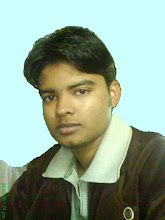The basic types of satellite systems include geostationary (GEO), Low Earth Orbit (LEO), Medium Earth Orbit (MEO), And Highly Earth Orbit (HEO) satellites. There are also publilc and privet satellite systems such as Television Receive Only (TVRO), Direct Broadcast Satellite (DBS), Global Positioning System (GPS), and multibeam satellite operations.
Geosynchronous satellite orbit the Earth on repeatedly regular point over time. Each GEO satellite is stationary over one spot above the equator therefore does not need any tracking from receiving and transmitting antennas on the Earth. GEO satellites enable the coverage of weather events. They are specially for monitoring severe local storms and tropical cyclones. They are best for television transmission and high speed data transmission.
Low Earth Orbit (LEO) satellite systems fly very closely to the surface of the Earth, up to 1,500 kilometers in altitude. They deliver more significant voice quality over GEOs and transmit signals with a small margin of delay. Some LEO systems are designed for satellite phones or global mobile personal communications systems. These can carry voice traffic among other data formats.
Medium Earth Orbit (MEO) satellites systems operate at about 10,000 kilometers above the Earth, making it lower than GEO orbits but higher than LEO orbits. They have a larger capacity than LEOs. This enable them more flexibility in satisfying shifting market demands for voice or data services.
Highly-elliptical orbit (HEO) satellite systems orbit the earth in an elliptical path unlike the LEO’s and GEO’s circular paths. Its elliptical orbit allows a wider view of the Earth and maximize the amount of time each satellite spends in viewing populated areas. It therefore requires fewer satellites than LEOs while providing an excellent line of sight.
POHELA BOISHAKH @ B L COLLEGE CAMPUS

SHOKHA MOIUKH, a newly organized cultural organization, celebrated Pohela Boishakh 1416 at the campus of Govt. B L College, Khulna with great joy and enthusiasm. It is a non-political organization organized by the interested student from different department of the college. They have started their first step through celebrating this traditional festival of Banglai where is no separation or difference of religion. As a beginning step of Shokha Moiukh and the best traditional festival it was a great challenge to them to success the program. Since I’m a member of the organization a lot of duty was being carried on my own shoulder. We started as our work plan taking permission from our college principal on 22nd March. After that we continued our work step by step till 13th April. We succeed through continuing this 23 days hard working and at last became able to celebrate Pohela Boishakh nicely.
We made colorful mask, festoon, banner , placard and many other artistic decoration. One of our great attraction was wall magazine which contents were submitted by the students from all department of the college. It was really nice, attractive and memorial where we got response enough from all sorts of students. At the morning of Pohela Boishak a joy and peaceful rally was brought out starting from the campus that was a great moment for both students and teachers. After rally a wonderful cultural program was held at campus where different types of traditional things were performed by the members of Shokha Moiukh.
I, on behalf of Shokha Moiukh, like to thank specially our principal Prof. Dr Ahmmed Reza and Prof. Md. Shofiullah, head of cultural committee. We are also grateful to Khurshida Begum and Suma Ghosh, honorable teacher of department of Zoology and Bangla respectively.
However, we are very glad to get a chance of celebrating this great festival. Our hope to new year that it will bring a lot of joy and happiness wiping out all the previous fault.
Subscribe to:
Comments (Atom)



